NIL
Inside Donald Trump’s push to fix college sports: How it began and what we know going forward
HOOVER, Ala. — As Donald Trump flew to the University of Alabama on May 1 to speak at the school’s commencement activities, he spent much of the flight time pondering how to fix college athletics. Accompanied by Sen. Tommy Tuberville of Alabama, a former college football coach at schools like Auburn and Ole Miss, President […]

HOOVER, Ala. — As Donald Trump flew to the University of Alabama on May 1 to speak at the school’s commencement activities, he spent much of the flight time pondering how to fix college athletics.
Accompanied by Sen. Tommy Tuberville of Alabama, a former college football coach at schools like Auburn and Ole Miss, President Trump wanted to know what was plaguing college football ahead of a meeting with retired Alabama football coach Nick Saban. Trump told the senior U.S. senator that he wanted to get involved in fixing college athletics. It started with assembling a group that intricately knew the ins and outs of a remarkable period of change for the sport.
“He said, ‘Let’s put a group of people together and give me your best shot,'” Tuberville told CBS Sports this week of his Air Force One conversation with President Trump. “And, then after that, see what we can do.”
That solution starts with Saban and Texas Tech chairman Cody Campbell, who are expected to co-lead a presidential commission on college athletics. The pairing of a seven-time national championship-winning football coach with a billionaire former college football player naturally generated major headlines.
Nick Saban expected to serve as co-chair for Trump administration’s commission on college football
Will Backus
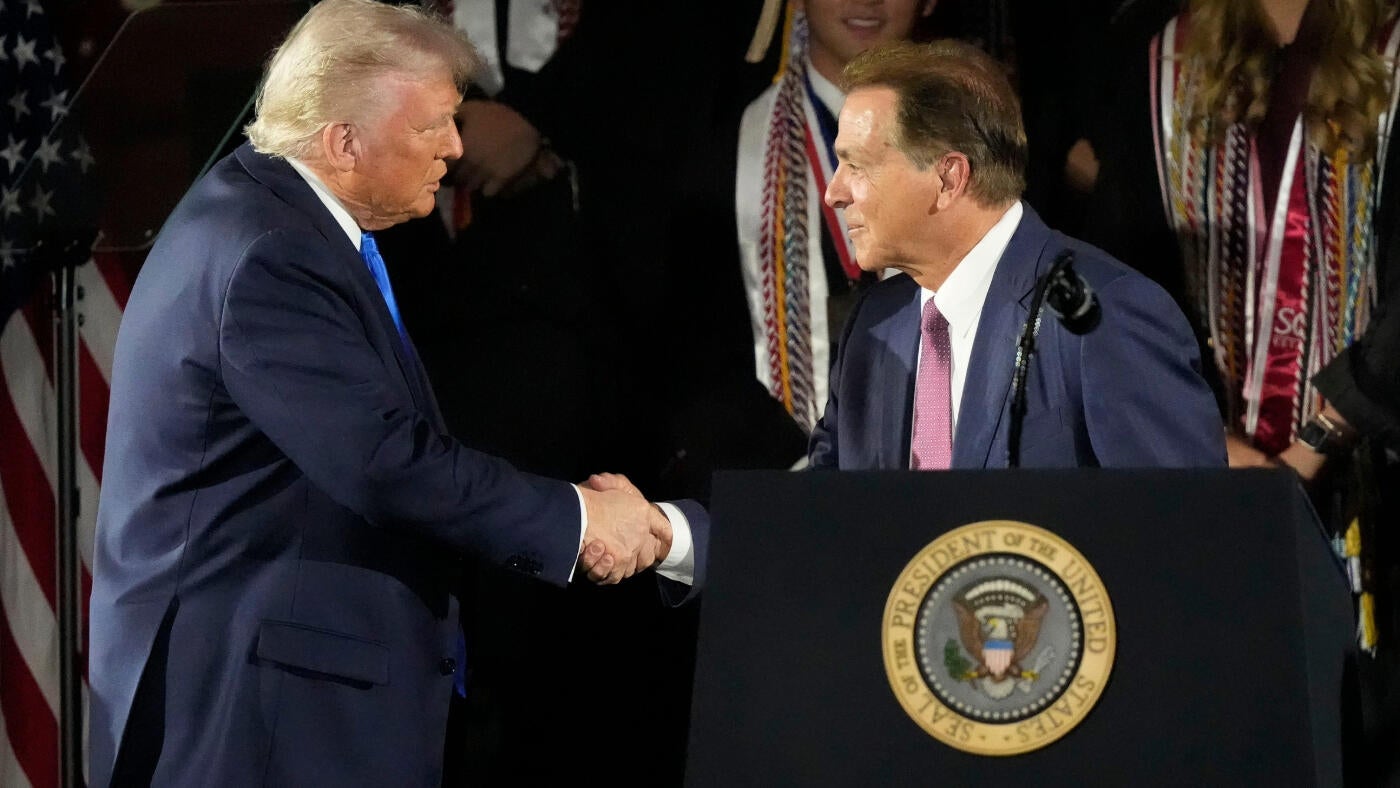
In his first public comments about the commission on Wednesday, Saban didn’t want to go into any primary specifics about the commission’s intentions when discussing with a small group of reporters at the Regions Tradition Pro-Am.
“To be honest with you, I don’t really know much about this commission,” Saban said Wednesday morning. “I don’t really know what the commission will do. I think we know what needs to be done; I just think we need to figure out who’s got the will to do it. I learned one thing about coaching all these years when you get a subject like this that’s very complex: It’s probably good not to talk about it off the cuff.”
Later that day, on the “Paul Finebaum Show,” Saban said he wasn’t sure there was a need for a commission at all.
Saban’s cagey response could be because the commission hasn’t been formalized yet and is still working through early essential details, according to those familiar with the process. But despite Saban publicly questioning its utility, he has been involved behind the scenes and recognizes the value Trump could bring in delivering a federal solution.
“I know that Nick and Cody are talking on the phone a lot,” Tuberville told CBS Sports, and that active work was being done on building the commission’s roster around them. He referenced American Football Coaches Association executive director Craig Bohl, who retired from Wyoming in 2023, as a name that would make sense to join Saban and Campbell.
“The only thing that I can say is that the AFCA, we’ve had significant conversations with, what I believe are the stakeholders in college football and our perspective and my perspective is that we listen to all the coaches and we certainly have some insight that I think is unique,” Bohl told CBS Sports. “But as far as the formulation of the commission, I’m not aware that anything has been set in stone. I’ve had dialogue, but there’s not been anybody from that commission to say, ‘Hey Craig, we want you on here.’ I’ve had a dialogue. I just don’t know where it’s all at.”
The White House has not responded to a request for comment regarding the commission. When asked to specify whether the dialogue was with the White House, Saban or Campbell, Bohl, a coach for over 40 years most notably at Wyoming and North Dakota State, did not provide specifics. But he was on Capitol Hill last month when he addressed members of the House Judiciary Committee at an NIL roundtable in April offering three key recommendations on agent regulation, standardization of contracts and urging congress to create a governing body to oversee NIL issues with coaches serving a formal role on such a body.
“I know [President Trump] is a big college football fan,” Bohl said. “I do know he cares, and I do know that Coach Saban cares. I think it’s imperative that each lane, whether it’s a commissioner, whether it’s college presidents, whether it’s coaches or student athletes or some members of Congress, that everybody has an opportunity to engage and clarify and offer their perspective on a pathway forward.”
According to Tuberville, the key is not overstuffing the group with too many names so that it becomes unwieldy and doesn’t accomplish anything; far too many NCAA working groups have experienced this over the years. He says that even though he’s not the one putting the roster together and is only helping informally, his phone has been ringing off the hook with people interested in joining the commission.
“I think you get people involved who are looking at it every day,” Tuberville said. “Not just some weekend person. We’re going to need player involvement, men and women. One thing that President Trump says on my watch is: ‘We’re not losing women’s sports, we’re not losing Title IX.'”
Georgia coach Kirby Smart said Wednesday he wasn’t sure whether Saban would be on the commission, but if he was, he could improve the current unregulated environment.
“He’s certainly the right candidate because he knows the landscape,” Smart said. “He’s very bright, and he’ll do the due diligence to be prepared for it.”
What does the group want to accomplish?
The proposed commission’s goals have not been revealed, in part because the group has not even been officially announced, but multiple interviews with involved parties offer clues as to its focus.
As CBS Sports detailed last week, Saban and Campbell have publicly shared their views on several topics, ranging from NIL to the transfer portal to Olympic sports. While Saban has constantly reiterated players deserve to be paid, he testified at a Senate hearing last year it wasn’t in the “spirit of college athletics” for “whoever wants to pay the most money, raise the most money, buy the most players is going to have the best opportunity to win.”
Can Nick Saban and a Texas billionaire fix college sports? What we know about their vision
Brandon Marcello
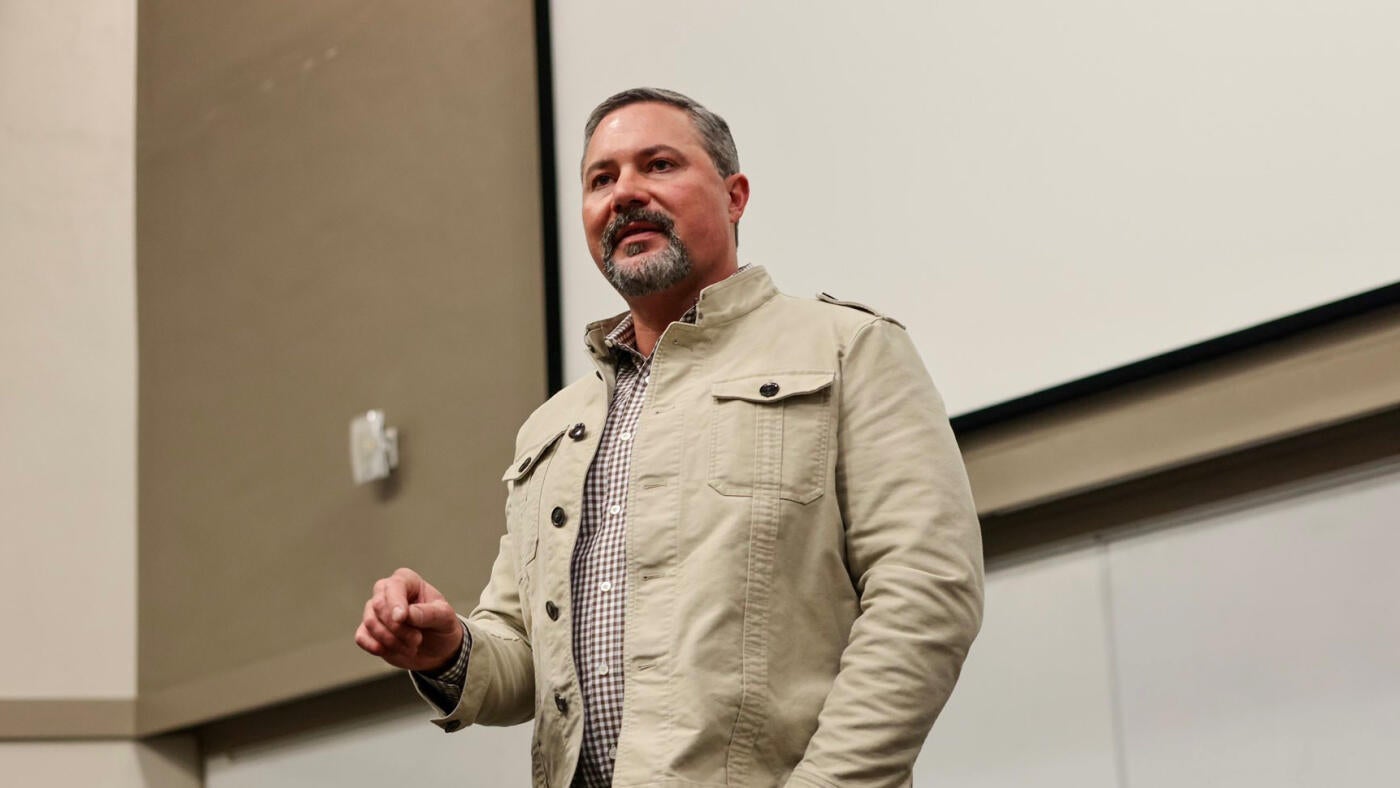
Tuberville shared a similar sentiment in a CBS Sports interview.
“You’re going to eliminate 90 percent of schools because they don’t have the money,” Tuberville said. “Look at Texas. Nobody’s ever going to beat them again if we allow them to keep going the way they’re going. Again, I’ve got nothing against Texas; they’re going by the rules, but we’ve got to hopefully make it work out.”
Campbell, a significant benefactor for Texas Tech football’s NIL efforts, has written in The Federalist that college sports needs antitrust protection and one set of rules rather than the current patchwork of different rules for different states that currently rules. Saban made a similar point on “The Paul Finebaum Show,” arguing the need for a law that encompasses all 50 states and eliminates advantages and disadvantages of each state coming up with its own NIL rules. This is something that college athletics leaders have been lobbying for on Capitol Hill for years and as likely a bet as anything to come out of the commission’s recommendations.
Said Tuberville: “The one thing we have to do — and I told the president this — the one thing we can do is we can get all 50 states doing the same thing.”
Another focus will be preserving Olympic sports in the face of revenue sharing (assuming the House settlement is approved), which will predominantly devote resources away from them. College administrators have publicly and privately wondered the impact of the $20.5 million revenue share number on Olympic sports, ranging from slashing resources to fears of having to cut sports altogether. Those sports are not revenue generators for athletic departments in a time where revenue has never been more critical, but they play an important role in developing athletes who could later represent their countries in the Olympics. This is a priority for both Trump and Tuberville, particularly ahead of the United States hosting the 2028 Olympics in Los Angeles.
There is a laundry list of other things that either could or will be explored from fixing what is currently year-round free agency in college sports to whether there needs to be collective bargaining with athletes to the impact of conference realignment. There is no shortage of issues that coaches, administrators and players believe warrants fixing.
Hall of Fame basketball player Charles Barkley knows all about that. The NBA analyst and Auburn alum believes Saban, a man he thinks the world of, has quite an arduous task ahead of him.
“I mean college athletics is so f–ked up right now,” Barkley said. “I don’t know what they’re gonna do to fix this thing. NCAA is just a bunch of idiots who let it get out of control. I don’t know how you put the toothpaste back in the tube.”
What’s the timeline?
The Wall Street Journal previously reported that Trump was weighing an executive order in an attempt to fix college athletics. He could even use an executive order to officially form the commission, as he recently did with a group focused on religious liberty.
There is no exact timetable on when the commission could come to conclusions. There is a strong desire to find solutions, but they still could be months away. The commission won’t have the power to change laws but can recommend them to Trump and/or Congress.
Trump wants to be involved in fixing college sports, but with everything else going on in the world, Tuberville said the group wouldn’t bring anything to the president until it had an actionable plan.
“There’s a huge range of problems that we got here that that run off in different directions,” Tuberville said. “I told him, ‘Mr. President, you understand just enough to get us all in trouble.’ Let’s do something and present it and try to explain it just like anything else when it comes to a tax bill or something to do with education or something to do with foreign relations. He’s got to have people around him saying we think this is the best thing, and then he’ll evaluate it and go with it or not go with it.”
There has been natural skepticism within college athletics about what a commission can accomplish, further enflamed by Saban’s comments Wednesday, but Tuberville believes it could be college sports’ best hope. He spent years trying to work on a bill alongside Sen. Joe Manchin (West Virginia). Others, like Sens. Ted Cruz (Texas), Cory Booker (New Jersey), Richard Blumenthal (Connecticut) and Jerry Moran (Kansas), have also spent years in trying to come up with a federal legislative solution to fix college sports’ ails. College sports leaders have spent considerable time and energy working with those senators and congresspeople to explain the issues and come up with solutions, but one Power Four AD recently told CBS Sports that they and their colleagues always leave Washington, D.C. dismayed at the prospects of a federal solution coming out of Congress.
Instead, it may be college football’s greatest coach and a Texas oil billionaire who help deliver a long-awaited rescue.
“I think Nick and Cody can get something done along with President Trump’s power,” Tuberville said. “You’re not going to get six votes in the Senate so (Trump is) going to have to say, ‘Look this is what we’re going to do.'”
NIL
Ashton Jeanty named finalist for NIL award
Ashton Jeanty dominated on and off the field during his junior season at Boise State, leading college football in carries (374), rushing yards (2,601) and rushing touchdowns (29) while ranking near the top of NIL valuation charts. Jeanty, who was taken sixth overall by the Las Vegas Raiders in the 2025 NFL Draft, is one […]
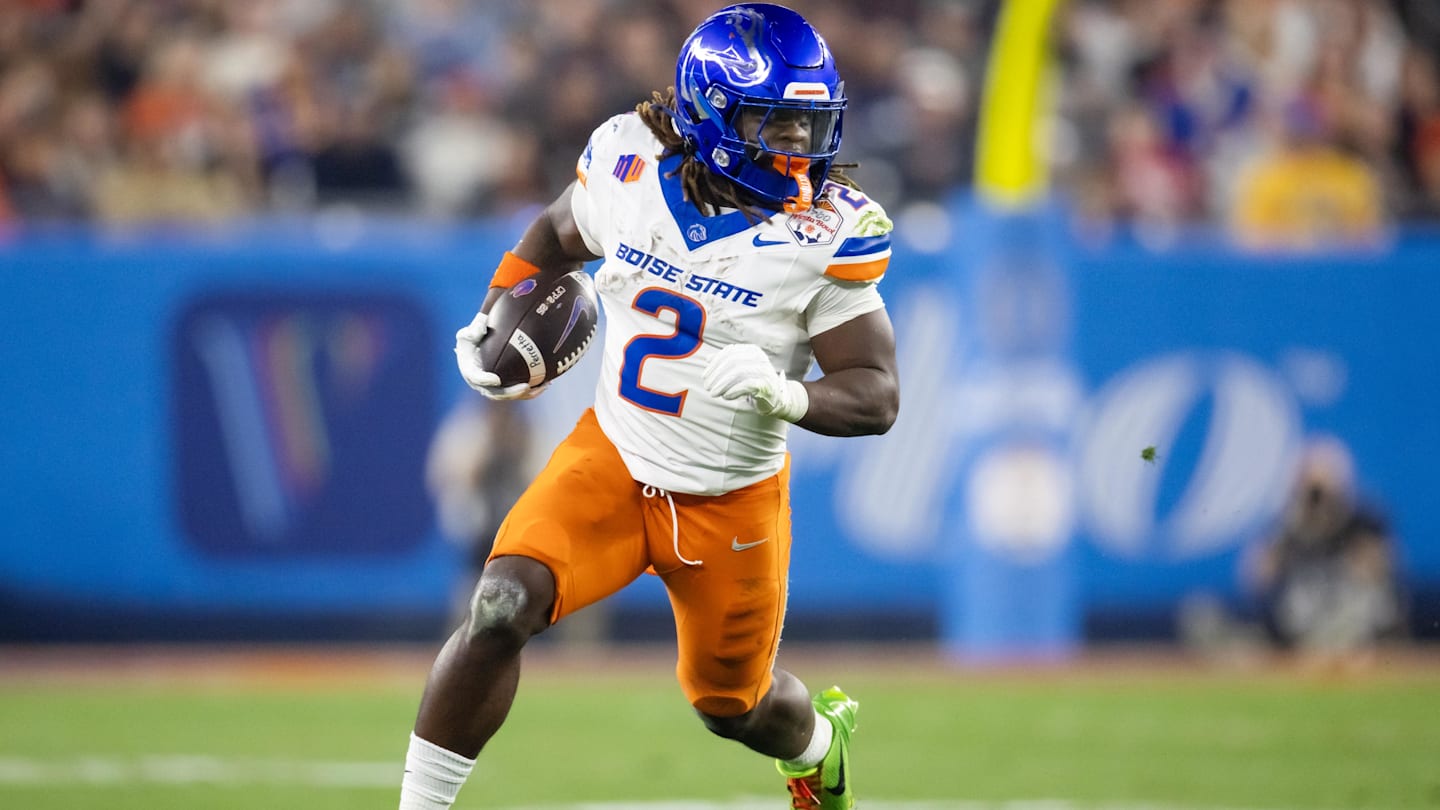
Ashton Jeanty dominated on and off the field during his junior season at Boise State, leading college football in carries (374), rushing yards (2,601) and rushing touchdowns (29) while ranking near the top of NIL valuation charts.
Jeanty, who was taken sixth overall by the Las Vegas Raiders in the 2025 NFL Draft, is one of five finalists for Top-Earning Male Athlete of the Year in the 2025 NIL Store Awards.
Cooper Flagg (Duke men’s basketball), Dylan Harper (Rutgers men’s basketball), Cam Skattebo (Arizona State football) and Braden Smith (Purdue men’s basketball) are the other finalists.
Jeanty is also a finalist for Merch Moment of the Year for his The Boogeyman T-shirt. The other finalists for Merch Moment of the Year are Johnny Kinziger (Illinois State men’s basketball), Derik Queen (Maryland men’s basketball), Jack Sawyer (Ohio State football) and the St. John’s men’s basketball team.
The 5-foot-8, 211-pound Jeanty recorded 1,970 yards after contact during his record-smashing junior season while forcing 164 missed tackles. His 2,601 rushing yards rank second on the FBS all-time single-season rushing list behind Barry Sanders.
With Jeanty leading the way, Boise State finished 12-2 overall and reached the College Football Playoff for the first time in program history. Jeanty placed second in the Heisman Trophy voting behind Colorado’s Travis Hunter.
Jeanty wrapped up his Boise State career with 750 carries for 4,769 yards and 56 total touchdowns. A two-time MWC Offensive Player of the Year, Jeanty won the 2024 Maxwell Award (college football player of the year) and Doak Walker Award (best running back in college football).
Jeanty and the Raiders agreed to a fully guaranteed four-year, $35.9 million rookie contract in May. He is the second-highest-paid running back in the NFL behind Philadelphia Eagles superstar Saquon Barkley ($36 million guaranteed).
Boise State beach volleyball star Nora Hayd is also a finalist for a pair of NIL Store Awards.
Hayd is up for Top-Earning Female Olympic Athlete of the Year and Most Innovative Design Collaboration for her Goth T-shirt.
The 6-foot-1 Hayd is entering her junior season with the Boise State beach volleyball team. She is a graduate of Bothell High School in Washington.
The NIL Store launched in 2021 in Chicago. According to its website, the NIL Store “serves as a merchandising solution for student-athletes and schools across the country. The NIL Store operates with the firm belief that every student-athlete has an opportunity to capitalize on their NIL and should earn industry-leading payouts.”
MORE BOISE STATE NEWS & ANALYSIS
NIL
CBF Picks Knapp For All-America Team
CHAPEL HILL, N.C. – Adding to his already impressive list of accolades, North Carolina ace Jake Knapp earned yet another All-America honor on Wednesday afternoon as the College Baseball Foundation (CBF) listed him among the nation’s best. Named the CBF’s National Pitcher of the Year just a few weeks prior, his third first-team All-America selection […]
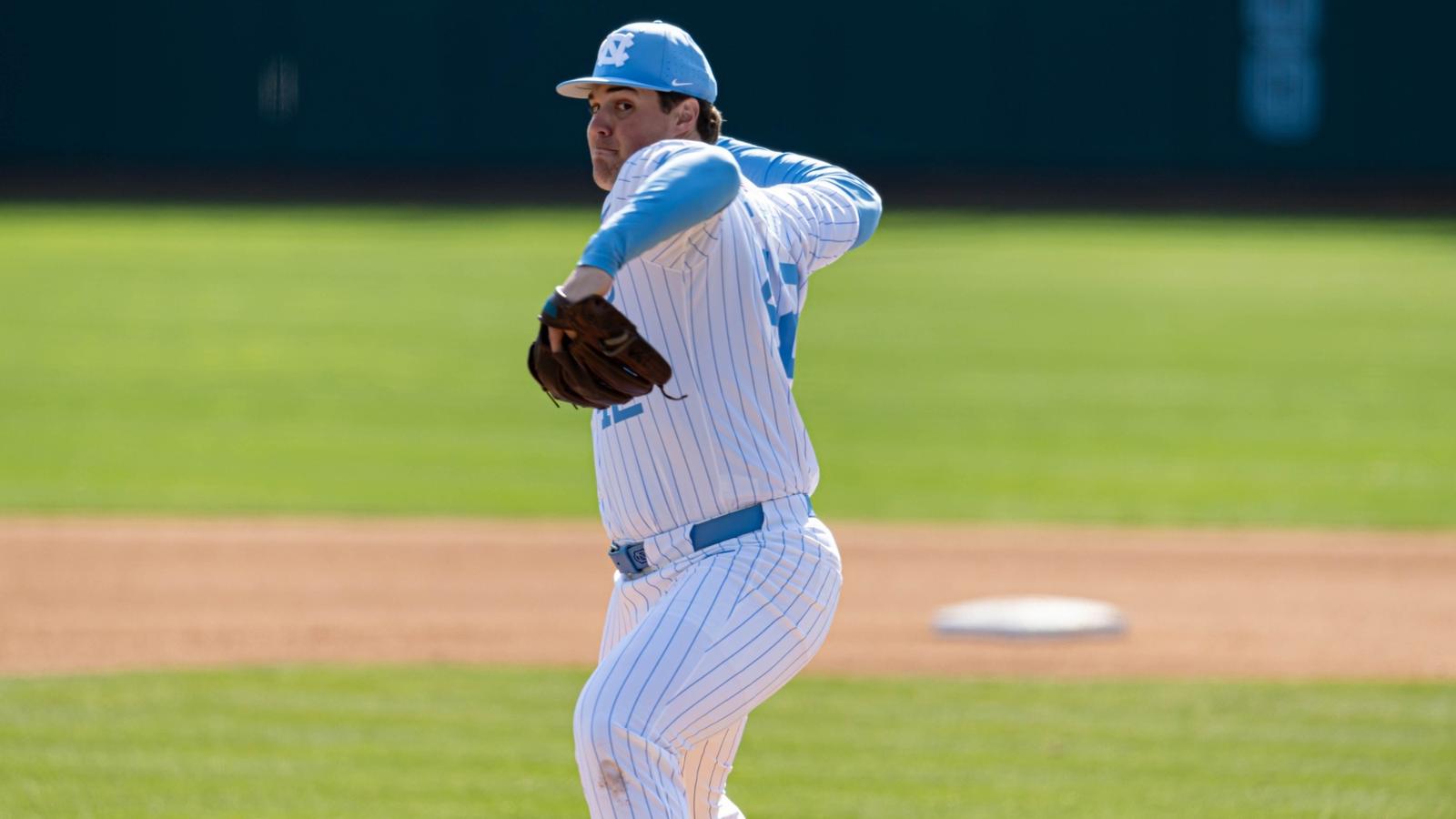
Named the CBF’s National Pitcher of the Year just a few weeks prior, his third first-team All-America selection gives him five AA nods thus far this postseason. He was also on the NCBWA and ABCA first teams, the Perfect Game second team, and Baseball America’s third.
Knapp was phenomenal this season in battling back from Tommy John surgery that took away his 2024 campaign. His 14-0 record is both the best in the country and the best in program history, as he finished with the most wins without defeat ever by a Tar Heel. He wrapped up his season with a 2.02 ERA in 102.1 innings pitched, two complete games, 88 strikeouts, and only 16 walks.
His 0.86 WHIP was third best nationally and just .03 away from breaking the program record. He went over a month in the heart of the season without allowing a walk, going 27 straight IP across four starts. He would not allow a free pass in six of his appearances, including four of his last five.
NIL
Utah vs. BYU
Chris Hill was poolside Wednesday afternoon when he answered the phone, relaxing after a round of golf. The former Utah athletic director’s playing partner? His longtime counterpart in Provo, ex-Brigham Young AD Tom Holmoe. “When Tom announced his retirement, I told him we’d play a round to celebrate,” Hill explained. (Holmoe stepped down this spring […]
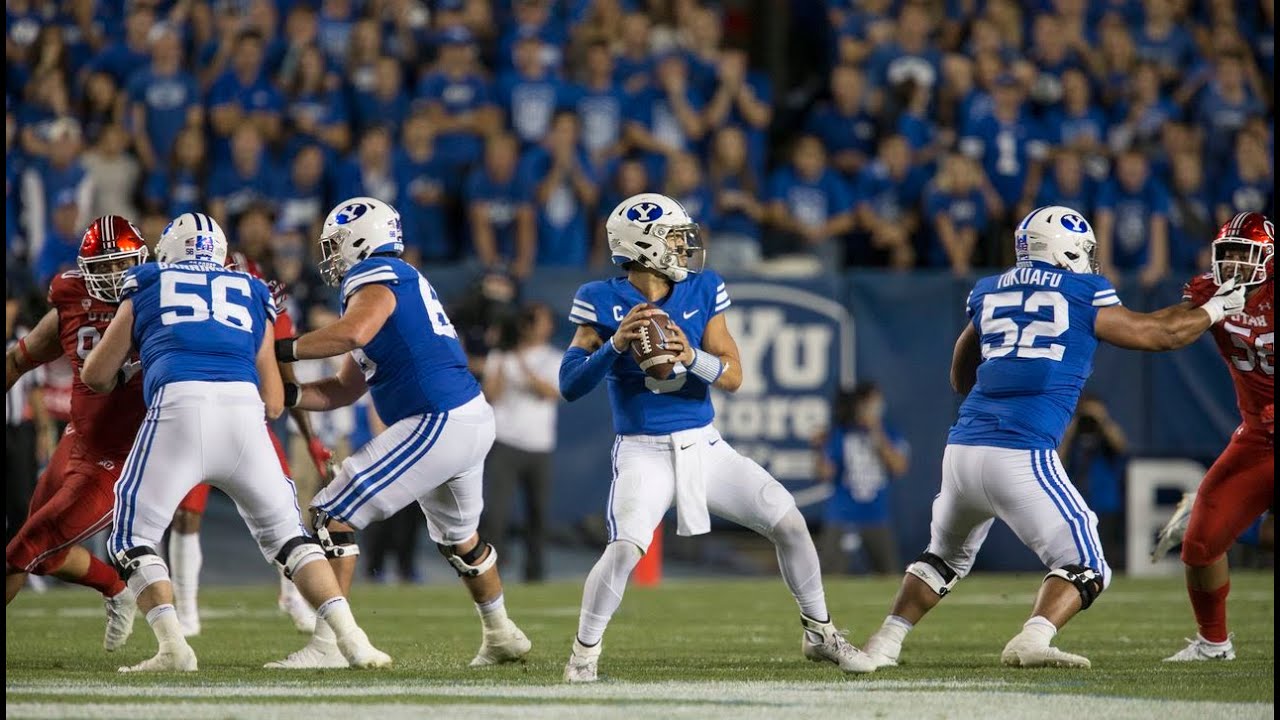


Chris Hill was poolside Wednesday afternoon when he answered the phone, relaxing after a round of golf. The former Utah athletic director’s playing partner? His longtime counterpart in Provo, ex-Brigham Young AD Tom Holmoe.
“When Tom announced his retirement, I told him we’d play a round to celebrate,” Hill explained. (Holmoe stepped down this spring after two decades in charge of BYU athletics.)
“Tom and I always got along. People don’t understand that because of the whole Utah-BYU thing. But the schools had a lot in common, and they still do. They’ll vote the same way on a lot of Big 12 stuff.
“But there are some differences, obviously.”
Hill and Holmoe spent most of their round — call it the Holy Fore! — chatting about their families, but they talked shop, as well.
There was no shortage of topics, what with the chaotic state of college sports, life in the Big 12, the landmark House vs. NCAA lawsuit settlement and BYU’s sudden success on the field (and court).
The era of unchecked NIL has gone exceedingly well for the Cougars, who possess one of the richest donor bases in the country. They aren’t alone — not even in the Big 12. Texas Tech, with funding from oil billionaire Cody Campbell, has acquired football and basketball talent at a rate that exceeds historical norms.
“As a Utah guy, yeah, I’m concerned,” Hill said. “You look at the dollars, and it’s just the reality. Utah has great support, and Utah will be fine. But it’s no secret that BYU has more wealth.”
The Big 12 hopes to end the unchecked NIL sooner than later. Along with the ACC, Big Ten, Pac-12 and SEC — the named defendants in the House antitrust lawsuit — the conferences created the College Sports Commission (CSC) to clean up a marketplace that, for four years, has been tantamount to pay-for-play.
Under the CSC structure, all deals worth at least $600 must be reported to NIL Go, a technology platform created by Deloitte that will determine whether contracts fall within a reasonable range of compensation. Rejected deals can be tweaked and resubmitted. There’s even a pathway to arbitration.
Led by Bryan Seeley, a former chief investigator for Major League baseball, the CSC will have the authority to punish schools for playing athletes whose deals were not approved.
At least, that’s the plan.
“There will be challenges,” Big 12 commissioner Brett Yormark explained in early June, following the House settlement. “But we’re very confident.
“Our schools want rules. We’re providing rules, and we will be governed by those rules. And if you break those rules, the ramifications will be punitive.”
Not everyone is convinced the CSC will effectively rein in pay-for-play and create a market of legitimate NIL, where the dollars paid match the services performed.
“In theory, it’s fine,” Hill said. “If they can enforce it, then it’s a different ballgame. But I’m skeptical. I just think they are going to get sued again and again until they can collectively bargain.”
Many share Hill’s gloomy outlook. The House settlement has not been codified by Congress. The NCAA does not have antitrust protection. Dozens of states have their own NIL laws on the books.
There is nothing and no one to stop an attorney from suing the CSC after an NIL deal is rejected. Why should a technology platform created by a company that’s paid by the conference be allowed to determine the reasonable range of compensation for services rendered?
The market determines the market, unless … the rules of the road have been collectively bargained.
You don’t see compensation lawsuits in the NFL or NBA, which have collective bargaining agreements (CBAs) between the leagues and the players’ unions.
But there are CBAs in college sports because there are no unions in college sports. In order to form a union, the athletes must be employees, and the schools do not want athletes to be declared employees.
For many university presidents, athletic directors and conference executives, athlete employment is a non-starter.
Hill disagrees.
“Students can be employees,” he said, referring to non-athletes who work while attending college. “I don’t know what the problem is. Just call them athlete-workers. There’s no reason why they can’t be employees.
“The NCAA is going to get sued again and again until there’s a CBA. I don’t see the end of it until they are employees with a union and contracts and buyouts.”
The timing of Hill’s golf game with Holmoe wasn’t lost on the man who led Utah athletics for 31 years: It came one day after BYU’s latest recruiting success.
On Tuesday, the Cougars secured a commitment from five-star quarterback Ryder Lyons, a rising senior at Folsom (California) High School who will join the team in the spring of 2027, following a one-year church mission.
Lyons, who picked BYU over Oregon, is part of a recruiting class that ranks third in the Big 12.
This, after the Cougars landed AJ Dybantsa, the No. 2 basketball recruit in the class of 2025.
And after they reached the Sweet 16 for the first time in more than a decade.
And after they won 11 football games.
In the world of unchecked NIL, talent follows the dollars. With Utah Jazz owner Ryan Smith and others lending their support, BYU has possessed the dollars needed to acquire talent at the highest level.
Hill circled back to the College Sports Commission — the great equalizer, in theory.
“If that’s the reality, then I don’t think there will be much difference between the schools,” he said. “But I think (the commission) will get sued. And I’m worried about it.”
*** Send suggestions, comments and tips (confidentiality guaranteed) to wilnerhotline@bayareanewsgroup.com or call 408-920-5716
*** Follow me on the social media platform X: @WilnerHotline
College Sports
As House v. NCAA settlement goes into effect, cheating likely to persist
We’ve heard change is coming. In a few days, the House v. NCAA settlement goes into effect. College sports will then enter a new era with significant changes in financial compensation for athletes. But don’t be too concerned about all the impending changes. Some things won’t change. There will still be pageantry, rabid fan bases, championship […]
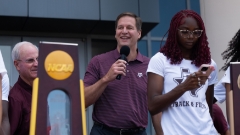
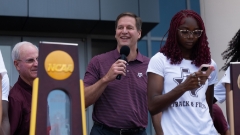
We’ve heard change is coming.
In a few days, the House v. NCAA settlement goes into effect. College sports will then enter a new era with significant changes in financial compensation for athletes.
But don’t be too concerned about all the impending changes. Some things won’t change. There will still be pageantry, rabid fan bases, championship games and, of course, cheating.
That won’t go away. The old saying in college sports is if you ain’t cheating, you ain’t trying. Whether it be football, basketball, baseball or probably anything else, colleges will all be “trying.” Some just try harder than others.
Texas A&M Director of Athletics Trev Alberts acknowledged as much earlier this week when discussing the upcoming changes brought on by the settlement.
“Are we ever gonna stop (somebody) from taking a brown paper bag of money and giving it to a player?” Alberts asked rhetorically. “We can’t.”
Those who live in a Utopian world with unicorns may wonder if that would be the case. After all, college programs now have $20.5 million to share with athletes. Why cheat, then?
Anybody who’s ever taken a job for more money knows the answer. And throughout the history of college football, there has always been a bag man lurking in the shadows to offer more money.
An extra $10 grand — or much more — on the side might convince a recruit or transfer which program to join.
The guess here is that most illegal activity will be done under the guise of Name, Image & Likeness (NIL). A few years ago, the Supreme Court ruled that athletes can profit from NIL. Many have and still will.

Kay Naegeli, TexAgs
On Monday, Trev Alberts told the media that Texas A&M will fully fund 410 scholarships for the 2025-26 academic year, an increase from 255.20.
Business-owning boosters have offered big money for endorsements from star athletes. There’s nothing illegal about that.
However, under the House settlement, the accounting firm of Deloitte will act as an independent clearinghouse to ensure NIL deals represent fair market value.
But what if Oregon decides it needs a quarterback? What’s stopping Nike Chairman Phil Knight, a wealthy Oregon booster, from extending a seven-figure endorsement deal to a prospect? Who’s to say that’s fair market value for a Nike commercial?
That might not even be against the rules. But what if Auburn approached Apple CEO Tim Cook, an Auburn grad, about a similar deal and offered to fund it?
A university official contacts a big business, such as American Express or General Motors… You get the idea. The official asks the business to offer a player $1 million endorsement deal. The university then offers to funnel the $1 million to the company.
No doubt, even more creative ways will be schemed to move money under the table. Alberts knows this.
“Our culture in college athletics is ‘tell me the rules so I can get busy working on a strategy to circumvent them,’” he said. “We’re never going to get where we need to go in college athletics if we don’t recognize that.
“If there’s anything that should have taught us that it’s the unregulated market of the last three or four years. Everybody wants to be governed. We just want to make sure other conferences are governed, too.
“But will there be ways around it? Will there be people that test it? Absolutely?”
Alberts said there will be harsh penalties for violators. He said a new breed of diligent NCAA investigators will be waiting to identify and punish programs and coaches who break rules.
“If there’s anything that should have taught us that it’s the unregulated market of the last three or four years. Everybody wants to be governed. We just want to make sure other conferences are governed, too.”
– Director of Athletics Trev Alberts
We’ve heard that before, right? The old NCAA wasn’t hesitant to deal out punishment. It’s just that the severity of punishments seemed to change depending on the offender.
Remember the line from old UNLV coach Jerry Tarkanian? “The NCAA is so mad at Kentucky that they’re going to give Cleveland State two more years of probation.”
Need an example closer to home? In 1994, the NCAA ruled that some Texas A&M football players were paid for work that wasn’t done in a summer construction job. Never mind that other workers who were not athletes were also paid.
That didn’t matter to the NCAA, which banned A&M from competing for the Southwest Conference championship or playing in a bowl game. The Aggies, by the way, were undefeated that season.
Fast forward a dozen years. In 2006, Oklahoma quarterback Rhett Bomar, offensive lineman J.D. Quinn and a walk-on were found to have been paid for work not performed by a Norman car dealership.
Oklahoma received a public reprimand and lost two scholarships for the 2008-09 and 2009-10 seasons.
Alberts acknowledged that there cannot be similar disproportionate punishments moving forward.
“I will tell you — and I pray that it’s not Texas A&M, and we’re working hard to make sure it’s not —but you’re going to have to have a ‘brand’ school get a penalty that’s significant and it sticks,” Alberts said. “And you may have to do it more than once.”
Is Alberts really suggesting higher-profile programs be held to the same standard and face the same sanctions if caught cheating?
That would be nice for a change.
Join our free email list
NIL
College basketball regular season expanding to 32 games
Cameron, Cayden Boozer talk Duke basketball, family legacy and Cooper Flagg The Boozer twins, Cameron and Cayden, talk about signing with Duke for their college basketball careers as well as their partnership with Crocs. A change is coming to the construction of regular-season schedules in men’s and women’s college basketball. On Wednesday, June 25, the […]

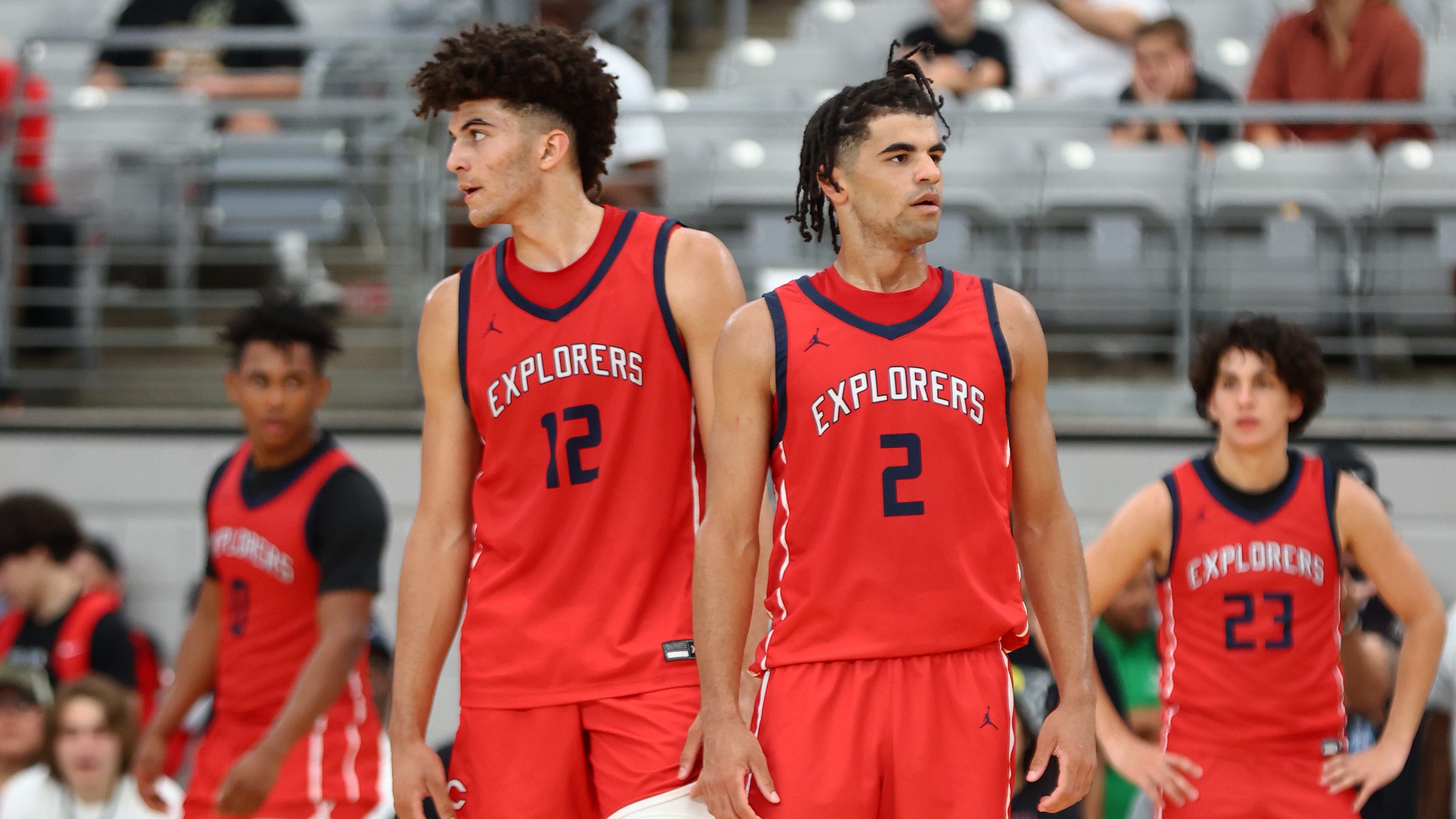
Cameron, Cayden Boozer talk Duke basketball, family legacy and Cooper Flagg
The Boozer twins, Cameron and Cayden, talk about signing with Duke for their college basketball careers as well as their partnership with Crocs.
A change is coming to the construction of regular-season schedules in men’s and women’s college basketball.
On Wednesday, June 25, the NCAA Division I Council approved a rule allowing schools to play a maximum of 32 games before the postseason starting with the 2026-27 season. Teams are currently allowed a maximum of 31 regular-season games.
In the new approval, the committee’s new legislation also removes the current legislated requirements that teams are held to for participating in multiple-team events (MTE). The adoption of the 32-game maximum model was proposed by the Division I Men’s and Women’s Basketball Oversight Committees back in March.
Though the 32-game model was approved, the NCAA’s news release on June 25 noted teams can play fewer games. The change also “does not limit the opportunity for multiple team events to operate or exist,” the release said.
The adoption of the 32-game regular-season model is the first change to the regular season schedule format in college basketball since the 2006-07 season.
Under the current structure, teams were able to schedule 28 or 29 regular-season games with either an additional two-game or three-game multiple-team event for a maximum of 31 games. Teams also had the option of scheduling 29 regular-season games without a multiple-team event part of their schedule.
“I greatly appreciate the significant amount of work that the MBOC and WBOC conducted, and the strong collaboration that took place, to put forth this legislation and look toward the future of regular-season scheduling. This proposed legislation does not require anyone to change their regular-season schedule and provides simplicity and greater flexibility as teams review their team and scheduling needs each season,” Dan Butterly, chair of the Men’s Basketball Oversight Committee and commissioner of the Big West Conference, said in a statement in March.
“The opportunity very much exists for teams to continue to play in multiple-team or bracketed events to prepare them for postseason play.”
The NCAA noted that oversight committees determined that the rule change provided greater scheduling flexibility for Division I programs. Teams can now play an additional game at a multi-team event or schedule a late-season marquee non-conference game — perhaps at a neutral site — to help boost their NET ranking and Quad 1 record for the NCAA Tournament.
In a time of college basketball (and college athletics) where more neutral-site non-conference games are taking place and the first NIL-driven multi-team event, The Players’ Era Festival, is now up to 18 teams, the allowance of having that additional regular-season game can be financially beneficial for teams and players.
The 32-game regular season schedule adoption comes a month after the NCAA’s Playing Rules Oversight Panel approved changes to the pace and flow of the game in men’s basketball. These adoptions included a coach’s challenge at any point in a game to review out-of-bounds calls, basket interference/goaltending and whether a secondary defender was in the restricted-area arc.
The USA TODAY app gets you to the heart of the news — fast. Download for award-winning coverage, crosswords, audio storytelling, the eNewspaper and more.
NIL
Lester Family Commits $6 Million Gift in Support of Michigan Football
ANN ARBOR, Mich. — Michigan Athletics announced on Thursday (June 26) a $6 million gift from Matthew and Nicole Lester in support of capital costs associated with the newly renovated and expanded football locker room in Schembechler Hall. Ten percent of the gift will be designated specifically to ongoing maintenance requirements and long-term infrastructure needs. […]
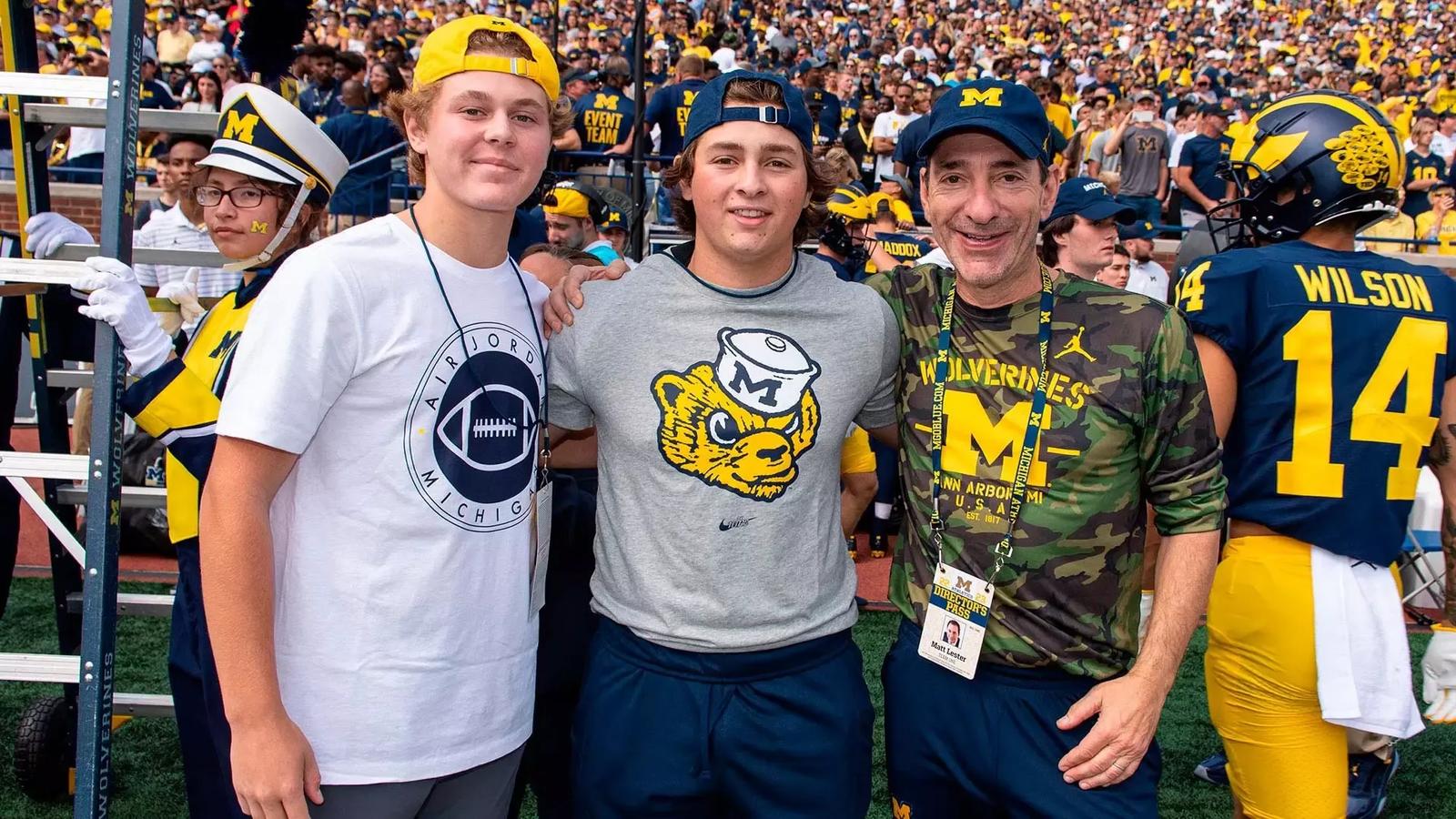
ANN ARBOR, Mich. — Michigan Athletics announced on Thursday (June 26) a $6 million gift from Matthew and Nicole Lester in support of capital costs associated with the newly renovated and expanded football locker room in Schembechler Hall. Ten percent of the gift will be designated specifically to ongoing maintenance requirements and long-term infrastructure needs.
“Matt and Nicole Lester have been nothing short of extraordinary in their unwavering support of our student-athletes, and our gratitude for their generosity knows no bounds,” said Warde Manuel, the Donald R. Shepherd Director of Athletics. “Their profound understanding of the transformative power of unique experiences and the indelible impact they can have on a young person’s life is truly inspiring.”
The Lesters wish to recognize the 2023 national champion football team by naming the new lounge area The Team 144 Players Lounge established by the Matthew and Nicole Lester Family. They will also officially name the barbershop Mike’s Barbershop, after two-time team captain and 2023 All-American defensive back Mike Sainristil.
“Our gift honors the 2023 national championship team, Team 144,” Matt Lester explained. “To me, Team 144 personified selflessness and brotherhood beyond any measure, and I believe these traits were integral to the undefeated success they achieved on the field. Once the meetings, film sessions, workouts and practices at Schembechler Hall are over, it is my hope that the players lounge will provide a space for future teams to relax and for the players to develop the connection and camaraderie necessary to win championships.
“We are extremely pleased to build a first-class barbershop in Schembechler Hall. There is nothing more relaxing than a shave and a haircut, and there was no one on Team 144 who was more clean-shaven, stylish or well-groomed than the two-time captain Mike Sainristil. I know the young men who play football for the University of Michigan will value the convenience and the service of a barbershop, and it is a way to honor Mike Sainristil’s legacy of leadership, commitment and care that he delivered every day as a Michigan Wolverine, both on and off the field.”
“The Lester Family holds a special place in the hearts of myself and many of my teammates,” said Sainristil, an All-American and captain of the 2023 national championship team. “I’m deeply humbled and honored that the Lesters valued my efforts and daily dedication to the team as well as my sense of style enough to name the barbershop in the locker room after me. During my time at Michigan, I forged a close bond with Matt and his family, and his mentorship in business and life exemplifies what makes our university truly exceptional. I am incredibly fortunate to call Matt a friend.”
The Lesters are longtime supporters of Michigan Athletics. The family endowed the Matthew and Nicole Lester Family Defensive Coordinator position in 2017 and made significant contributions to the Stephen M. Ross Facilities Project during the University’s previous campaign, Victors for Michigan.
Through Princeton Management, a real estate property management and development company, Matt offers a summer internship program for U-M football student-athletes. He is also a founding member of the Champions Circle NIL collective specifically for football, and supports men’s and women’s basketball, swimming and diving, and women’s gymnastics through NIL.
The family provides philanthropic support across the University, including the School for Environment and Sustainability, LS&A, the Museum of Art, the University Musical Society and medical school. Matt earned his bachelor’s degree from U-M’s College of Literature, Science and the Arts in 1987.
-

 Motorsports2 weeks ago
Motorsports2 weeks agoNASCAR Weekend Preview: Autódromo Hermanos Rodríguez
-

 Health3 weeks ago
Health3 weeks agoBold and unapologetic
-

 Motorsports2 weeks ago
Motorsports2 weeks agoNASCAR Through the Gears: Denny Hamlin has gas, a border needs crossing, and yes, that’s a Hemi
-

 NIL3 weeks ago
NIL3 weeks agoShai Gilgeous
-

 Motorsports2 weeks ago
Motorsports2 weeks agoNASCAR Race Today: Mexico City start times, schedule and how to watch live on TV
-

 Health3 weeks ago
Health3 weeks agoNew Era Begins As House Settlement Approved
-

 Health2 weeks ago
Health2 weeks agoGymnast MyKayla Skinner Claims Simone Biles 'Belittled and Ostracized' Her amid Riley …
-

 College Sports2 weeks ago
College Sports2 weeks agoFisk to discontinue history-making gymnastics program after 2026 | Area colleges
-

 High School Sports2 weeks ago
High School Sports2 weeks agoHighlights of the Tony Awards
-

 NIL2 weeks ago
NIL2 weeks agoTennessee law supersedes NCAA eligibility rule



































